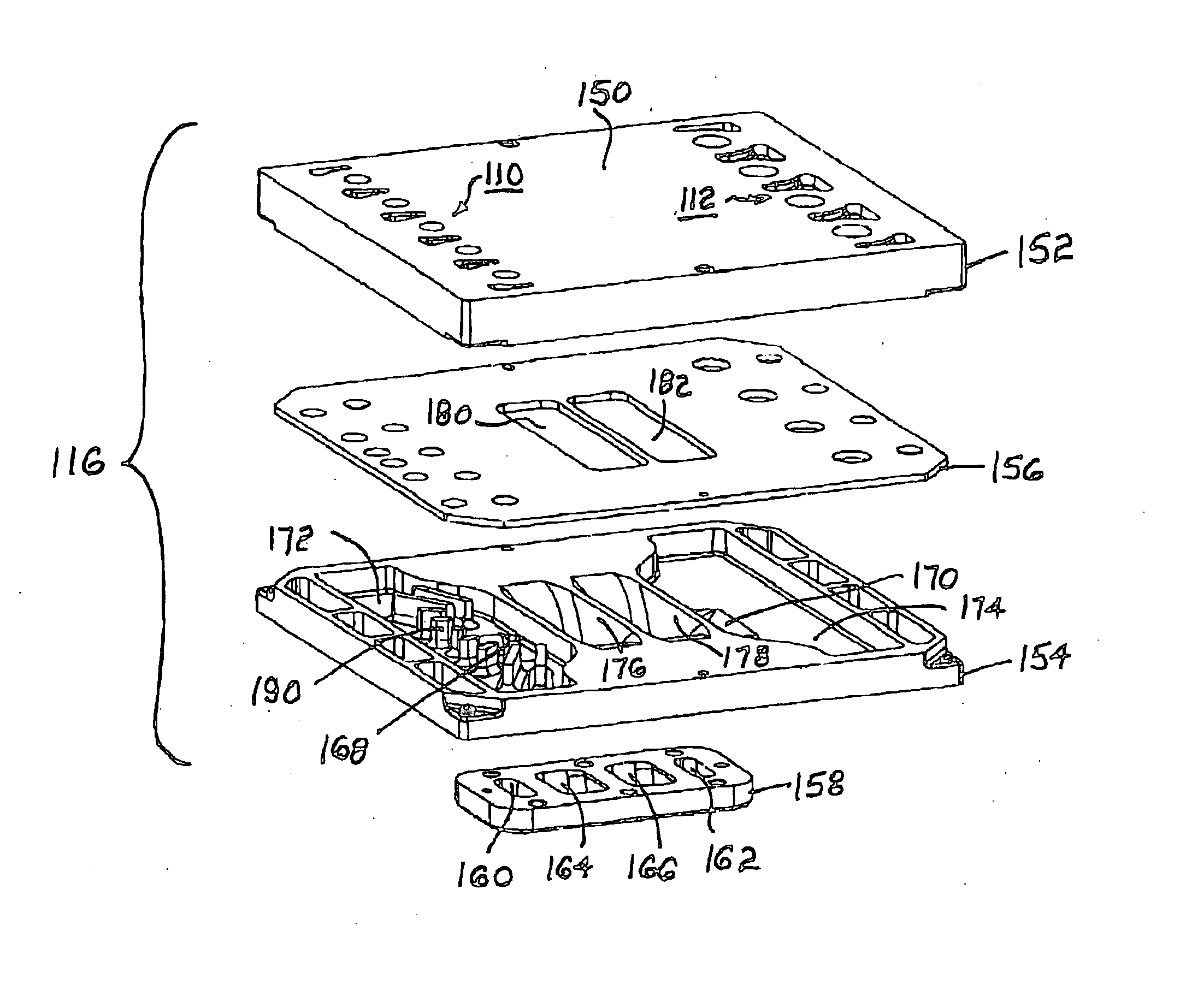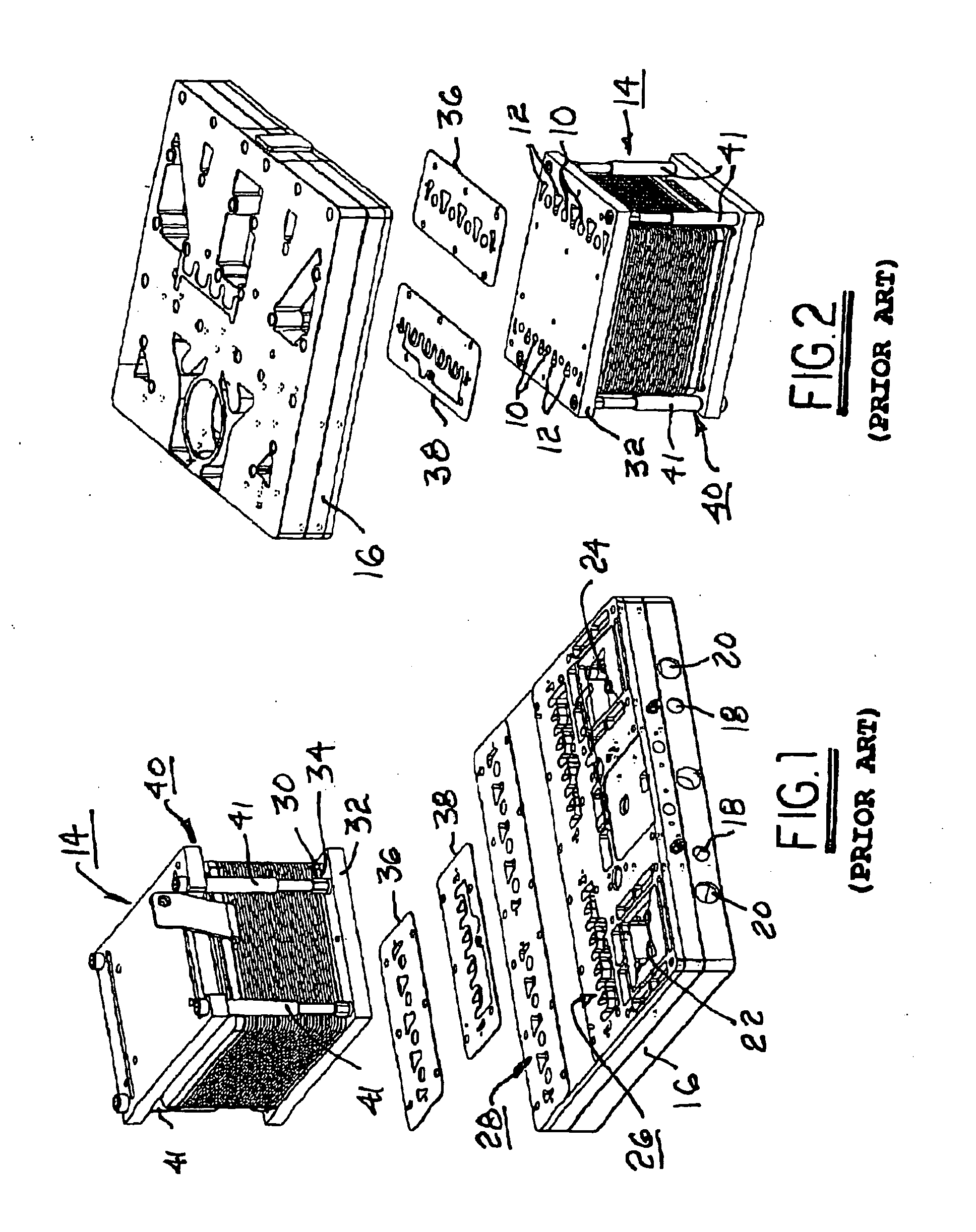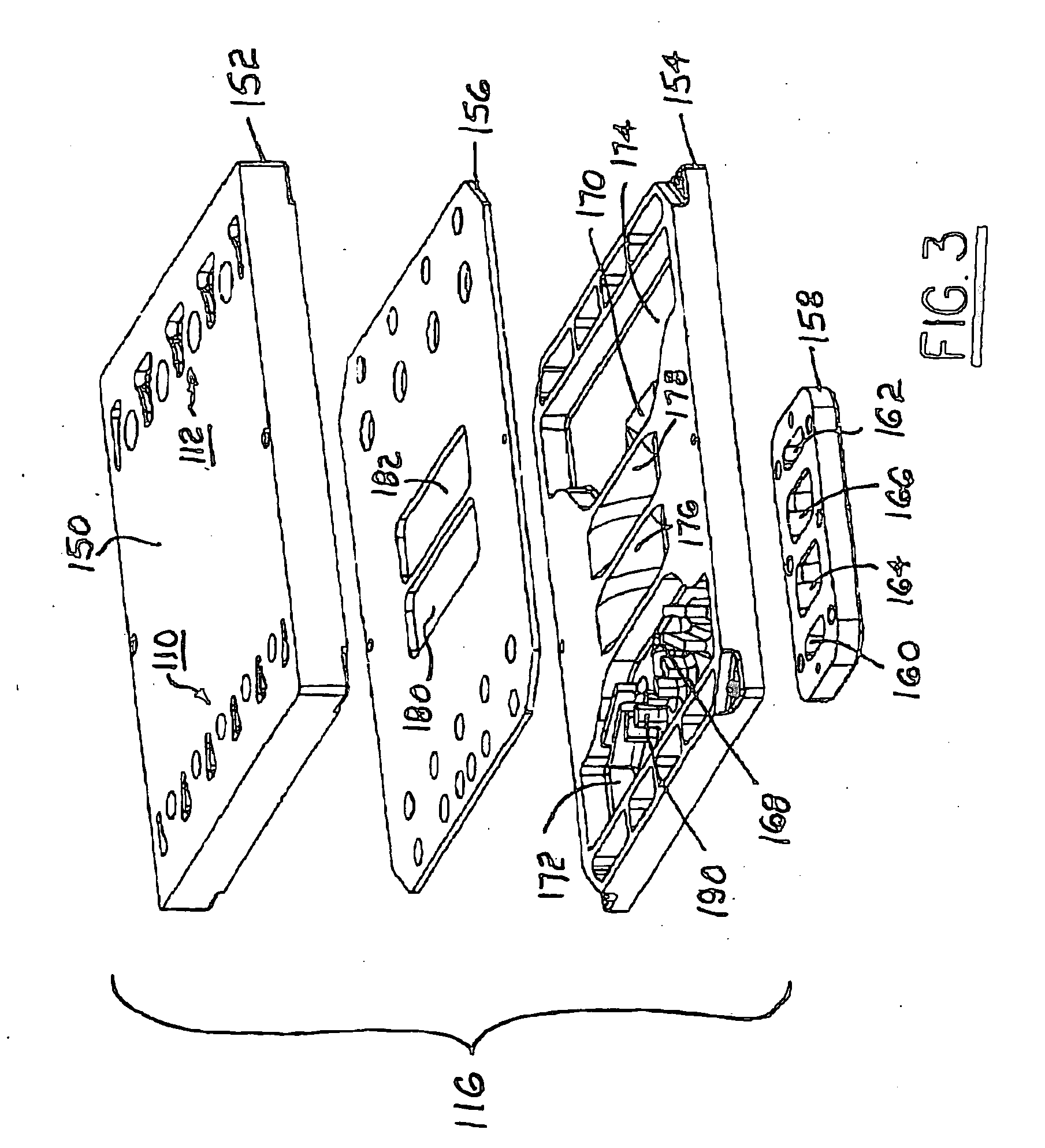Solid oxide fuel cell stack having an integral gas distribution manifold
a fuel cell and gas distribution manifold technology, applied in the field of solid oxide fuel cell systems, can solve the problems of heavy duty, dimensionally larger, thick and massive, etc., and achieve the effects of improving the durability and reliability of the sofc power unit, preventing leakage therebetween, and high strength
- Summary
- Abstract
- Description
- Claims
- Application Information
AI Technical Summary
Benefits of technology
Problems solved by technology
Method used
Image
Examples
Embodiment Construction
[0031] The benefits and advantages of an integral individual manifold for a fuel cell stack in accordance with the invention may be better appreciated by first considering a prior art assembly of a fuel cell stack and a separate gas distributing manifold, and the shortcomings thereof.
[0032] Referring to FIGS. 1 and 2, in the prior art, distribution of anode fuel gas and air into and out of the anode and cathode distribution chimneys 10,12 of a fuel cell stack 14 (such as an SOFC stack) is carried out by a separate, complex gas distributing manifold 16, such as is disclosed in U.S. Pat. No. 6,967,064 B2. Manifold 16 routes these gases from respective anode and cathode inlet ports 18,20, through tubular heat exchangers (not shown but mounted to sockets 22,24) for partial equalization of temperature differences between the hot reformate fuel and the incoming air, and thence to outlet and return ports 26,28 on the surface of manifold 16. (Manifold 16 as shown is formed to accommodate t...
PUM
| Property | Measurement | Unit |
|---|---|---|
| operating temperature | aaaaa | aaaaa |
| operating temperature | aaaaa | aaaaa |
| operating temperature | aaaaa | aaaaa |
Abstract
Description
Claims
Application Information
 Login to View More
Login to View More - R&D
- Intellectual Property
- Life Sciences
- Materials
- Tech Scout
- Unparalleled Data Quality
- Higher Quality Content
- 60% Fewer Hallucinations
Browse by: Latest US Patents, China's latest patents, Technical Efficacy Thesaurus, Application Domain, Technology Topic, Popular Technical Reports.
© 2025 PatSnap. All rights reserved.Legal|Privacy policy|Modern Slavery Act Transparency Statement|Sitemap|About US| Contact US: help@patsnap.com



